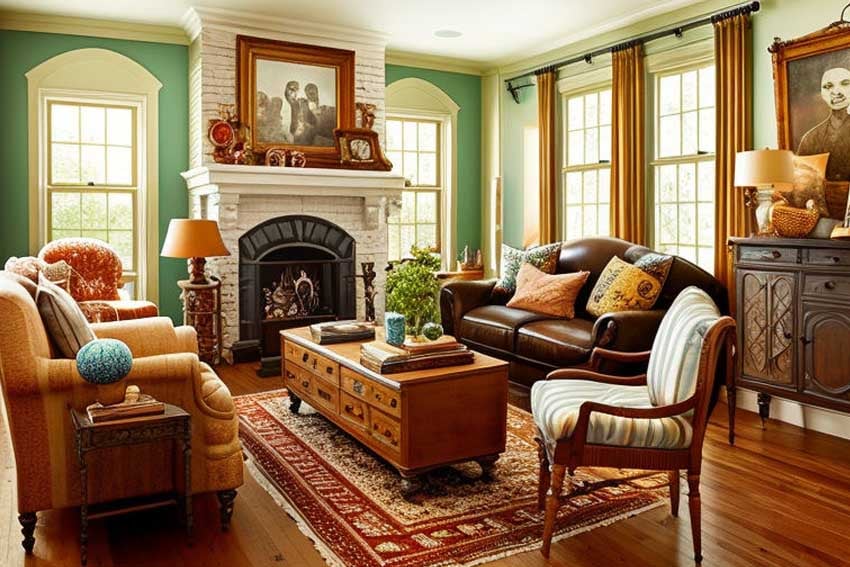Table of Contents
The boundaries between cultures have loosened, leading to a fascinating fusion of design influences from around the world. This cultural exchange has given rise to the concept of “global fusion” in interior design.
Elements from different regions are seamlessly integrated to create spaces that are rich in history, diversity and personality.
By embracing global fusion, you’re able to celebrate the beauty of cultural diversity, while crafting unique and vibrant interiors. Reflecting your individual tastes and experiences as well!
The Essence of Global Fusion
At the heart of global fusion is the celebration of diversity.
Instead of adhering strictly to one particular style or cultural tradition, global fusion encourages an eclectic approach that embraces the richness of global design influences. From the intricate patterns of Moroccan textiles to the minimalist aesthetic of Japanese interiors, there’s a world of inspiration just waiting to be explored.
Creating a harmonious balance between cultural elements is one of the key principles of this design style. Rather than simply layering disparate pieces together, you should consider how different styles, colours and textures can complement and enhance one another.
This approach will allow you to create a cohesive and unified space; regardless of the diverse influences.
Exploring Global Design Traditions
It’s essential to draw inspiration from a wide range of cultural traditions to achieve a successful global fusion home. Think the vibrant colours of Indian textiles to the more organic forms of Scandinavian furniture, there are endless sources of inspiration to choose from.
By studying the design principles and aesthetic sensibilities of different cultures, you can gain valuable insights into how you should incorporate these elements into your space.
Tips for Creating Eclectic Interiors
Start with a neutral colour palette for your walls and larger furniture pieces. This creates a versatile and cohesive canvas, allowing you to layer your space with vibrant and eclectic elements without overwhelming your room.
Often an overlooked part of your home, you can use flooring as a cornerstone of your design palette too. Choose versatile materials such as wood flooring or natural stone, providing a timeless backdrop for layering. With floors, you could consider taking a more elaborate route and have parquet flooring instead.
Textiles are a fantastic way to infuse your space with colours and patterns of different cultures too. You can mix and match rugs, throw pillows and curtains from different regions to create a visually dynamic and inviting atmosphere.
Incorporating handcrafted pieces can add a personal touch to your home, while celebrating the skill and craftsmanship of artisans from across the globe. Consider unique pottery, textiles and even artwork that displays traditional techniques and materials.
It’s important to pay attention to scale and proportion when mixing furniture and decorative elements from different cultures. This is to make sure everything feels balanced! It’s best to avoid overcrowding your room with lots of large or bulky pieces; instead, consider a mix of sizes and shapes, which will also create visual interest.
The key principle with blending cultures is allowing your home to tell a story about who you are and the experiences that have shaped you.
Whether it’s through a collection of souvenirs or family heirlooms that have been passed down through generations. Infusing your home with personal touches will add depth and meaning to your global fusion interior.
Celebrating Cultural Diversity Through Design
In a world that is increasingly connected, global fusion design offers a way to celebrate the beauty and diversity of different cultures. By embracing elements from around the globe and artfully blending them together, you can create a home that’s as unique and vibrant as they are.
From the colours and patterns of textiles to the choice of flooring, every detail contributes to the rich tapestry of cultural influences that define a global fusion interior.





